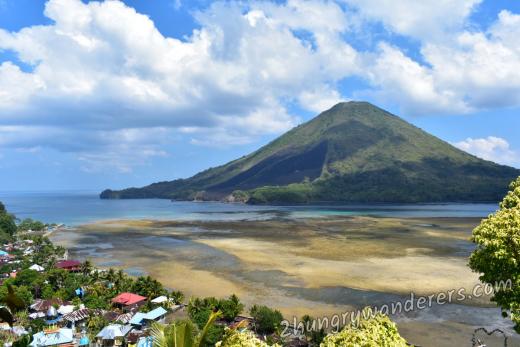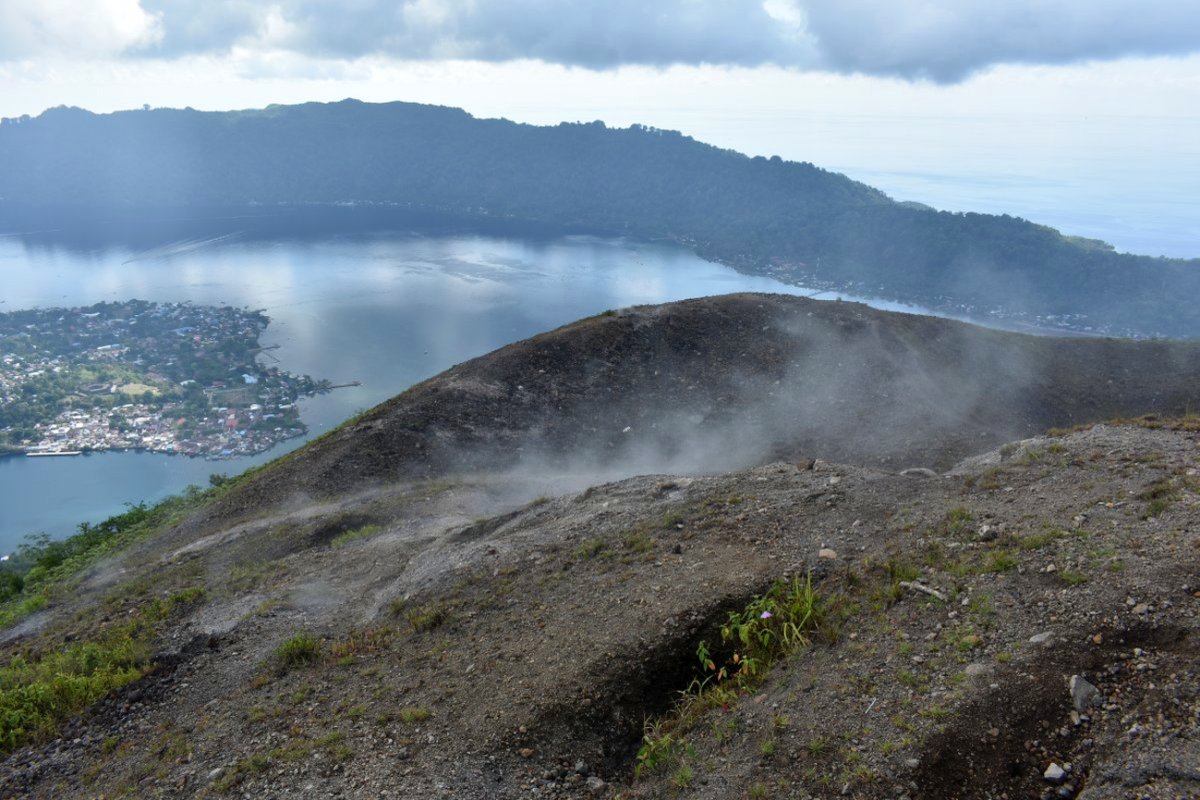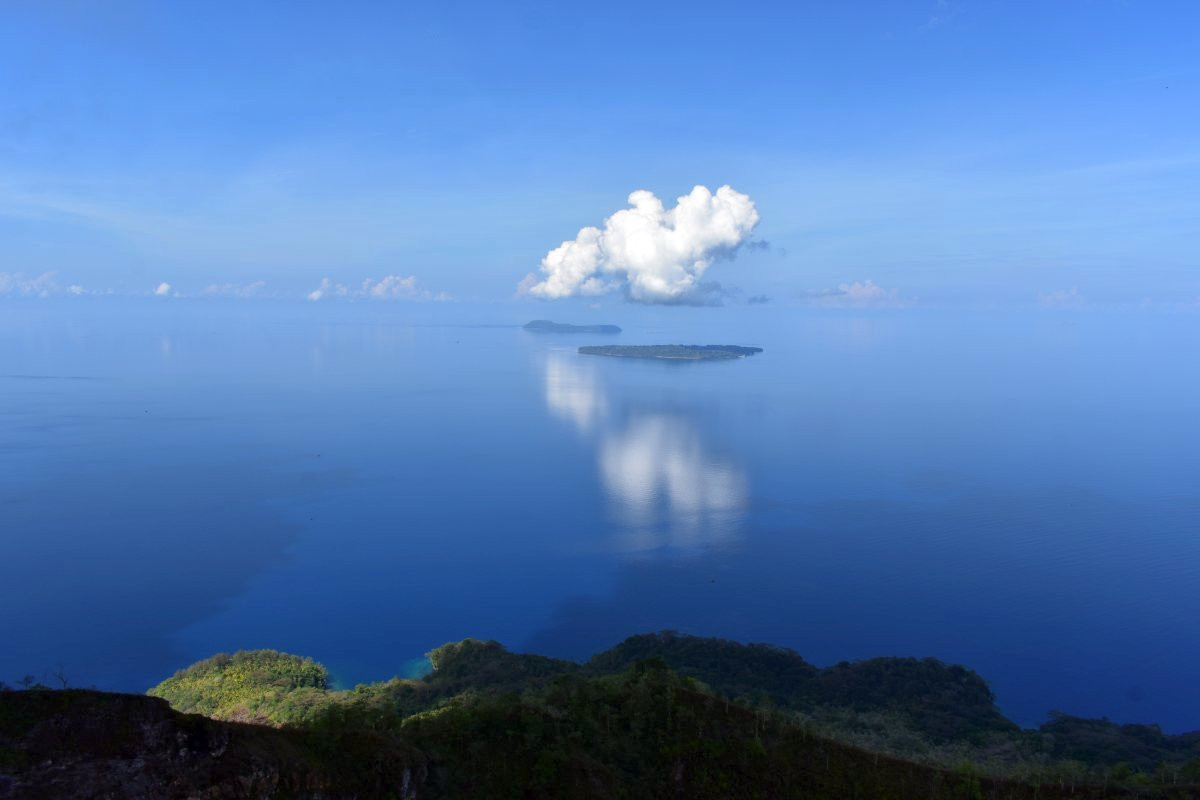
The Api volcano rises 640 m above the ocean, its green summit visible from all the Banda islands. It is located just a few hundred meters from the main town of Bandaneira on Naira island in Indonesia, providing beautiful views for its visitors.
The volcano is still very much active, with the last major eruption in 1988, which prompted the evacuation of residents in some parts of the neighbouring islands. Several lava flows went into the sea during that time and today corals and sea life are growing into beautiful underwater gardens over those spots, popular for snorkelling and diving trips.
We count ourselves as moderately fit and hiking is not new to us, so the decision to go up Api was not a hard one. We spent three weeks on Banda and made sure to choose a day with a good weather forecast for our ascent, so as not to miss the beautiful views from the top.
The evening before, we arranged for a boat to take us the 100 meters from Naira to Api island and back. We talked with our host Bahri, the owner of Delfika guesthouse and he gave us a quick safety instruction - as it is an active volcano you should be careful at the top, don't go too close to cracks or near the edge of the caldera. Better to have a look around and go back, not to linger for too long at the top.
In the morning, we left our room around 6 am, and 20 minutes later we were at the start of the path to the top of the volcano. Starting early is important for two reasons - first, avoiding the heat of the day makes for an easier hike, and second, clouds tend to gather over Api around midday, obscuring the view, and it is better to arrive before that. We were told that some people start even earlier, so as to be able to watch the sunrise from above, but we didn't want to trek the unknown path in the dark.

There was only one way going up, very easy to follow, and without any danger of getting lost. It went almost straight up and the first 15-20 minutes were in the jungle, shaded from the sun. Some of the reviews we had previously read spoke about spider webs directly on the path, and the spiders on Banda are huge! But luckily for us, the only spiders lurking around were on the sides.
After the initially pleasant ascent in the jungle, the path quickly became rough, covered in loose rocks and gravel, and the further up we went, the worse it became. It was two steps up, one step sliding down in the gravel, at places your foot would sink up to the ankle in the mix of ash and stones that was the path.
It was good we had plenty of water and some salty snacks, the sun was hard, even in the early morning, and the air was humid, one can easily get dehydrated. We left one water bottle halfway to the top, to lighten the load, and then collected it on the way down.

It took us about 3 hours of very unpleasant hike to reach the top.
It was like a different world on the edge of the caldera - cracks in the ground, hot steam coming out, and the smell of rotten eggs in the air. The view was simply amazing - the little islands in the near distance, some, with tiny puffy clouds above and beyond - the nothingness of the ocean, clear and calm, the blue of the sky dissolving into the water.

We took some photos, of course, and sat there, inhaling the view and the atmosphere for a short while before beginning our way down.
Now, if the struggle uphill was unpleasant, with the gravel and the sun, the descent was a whole new level of bad. With every step, the tiny rocks would slide under your feet, making you lose balance and look for something to grab onto, and the loose rocks would hit your ankles. It felt like going down on an endless path covered in marbles mixed with sand. It took us longer to go down than to reach the top.
When at water level we called our boat driver to come to get us and had a deserved rest after the exhausting day.
While it was an amazing experience to see the volcano up close and the view from the top was second to none, we vowed to never climb any volcanoes in the future. The gravel and rocks left some bruises and the hike was mighty unpleasant, not worth even the prize at the top.


Comments